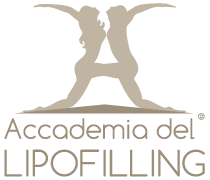Regenerative surgery is designed to restore damaged tissues to their original, healthy condition using surgical techniques that enable assembly of the three key elements of tissue regeneration at the wound site, namely adult stem cells, growth factors, and a suitable scaffold, i.e., a biological substrate able to guide and support the regenerative process. In this way the concept of mere tissue repair, typical of traditional plastic surgery, is superseded, and a new era in plastic surgery is ushered in.
At the present time, lipofilling, also known as lipostructuring, is at the forefront of this evolutionary process. It does not replace, but rather integrates perfectly with traditional plastic surgery techniques, alongside many other innovative approaches, among which those that harness the regenerative potential of the amniotic membrane stand out.
Researchers at this Centre for Research and Training in Regenerative Medicine are currently conducting both experimental and clinical tests on the great capacity of the amniotic membrane to promote the regeneration of human tissues.
The details of the intervention
lipofilling, also known as lipostructuring, is a “natural and safe” method of correcting unsightly imperfections that has become almost indispensable in plastic surgery, where it finds effective applications in both cosmetic and regenerative medicine. In cosmetic surgery it is used to improve and define the profile of the face, breasts, buttocks, hands and calves, and in regenerative
The details of the intervention
Peripheral nerve damage, usually caused by trauma or the surgical removal of tumours, can result in severe disability. As nerve cell regeneration is inefficacious, any sensory or motor deficits resulting from such damage is therefore likely to persist. However, the human amniotic membrane (HAM), a by-product of birth which has biological characteristics that make it
The details of the intervention
This procedure is a means of breast augmentation, i.e., increasing the volume and improving the profile of the breast. It is performed without the use of breast implants, and in certain cases may be used to reconstruct the breast after tumour removal. The operation Lipofilling is performed in an operating theatre that conforms to the highest sterility
The details of the intervention
It is thanks to the Italian School that lipofilling is now used in reconstructive breast surgery. In this case the focus is not the cosmetic augmentation of healthy breasts (with or without implants), but the reconstruction of the breast after mastectomy, or to treat defects or asymmetry resulting from radiotherapy. Nowadays lipofilling is considered a
The details of the intervention
There are two main indications for facial lipofilling: to revitalize the skin and give it a more youthful appearance. It can be used as a “natural” permanent filler, in place of hyaluronic acid-based fillers, which only stay in place for a few months, but also as a “natural” dermal biorevitalizer, to rejuvenate the face, when injected in a thin layer under the skin.
The details of the intervention
Scarring occurs after every accidental injury or surgical intervention, and, however skilled the surgeon or appropriate the suture technique, some people are left with painful scars that persist for many months after the initial wound. In some cases a keloid (excessive) scarring response can occur, leading to marked, reddened, and often painful scars that cannot
The details of the intervention
Lipofilling can be used to permanently and “naturally” remodel the buttocks, without the need for synthetic implants, which often cause severe complications such as depressed scars or other dangerous side-effects due to implant leakage. The cosmetic outcomes of buttock lipofilling are aesthetically pleasing, and the consistency of the remodelled buttock is natural and indistinguishable from that of the surrounding tissue.
The details of the intervention
It is often the hands, rather than the face or any other part of the body, that reveal the age of a person. The skin on the back of the hands is very loose and delicate, and tends to become thinner with age. Dark spots and irregular pigmentation can develop (due to actinic or seborrheic keratosis), and the bony structures beneath the skin become more prominent.
The details of the intervention
Lipofilling can serve as a natural, non-invasive and permanent means of remodelling the calves without the need for synthetic implants.
The details of the intervention
Liposuction is a surgical intervention that is designed to remove excess adipose tissue (fat) from certain areas of the body, without appreciable scarring. The operation is especially beneficial when fat is removed from the upper thighs, abdominal region (fat accumulation below the navel), flanks (the so-called “love handles”), the inner side of the knees, or below the chin.
The details of the intervention
